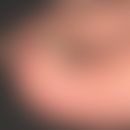HistoryThis section has been translated automatically.
Chagas, 1909
DefinitionThis section has been translated automatically.
Parasitic protozoon, causative agent of Chagas disease. Forms occurring in humans:
- Trypomastigote: Non-divisible free blood form with typical C- or S-shaped shape, 17-20 μm long, 2 μm wide flagellate with undulating membrane and flagella.
- Amastigote: Divisible, intracellular, 5-15 μm large oval shape without flagellum.
You might also be interested in
General definitionThis section has been translated automatically.
Absorption of the parasites from the faeces of bloodsucking predatory bugs via wounds caused by the bite of the bugs or by scratching.
Occurrence/EpidemiologyThis section has been translated automatically.
Endemic in South America. 16-18 million infected; third largest tropical health problem worldwide.
ClinicThis section has been translated automatically.
DiagnosisThis section has been translated automatically.
- Laboratory diagnosis: During the acute phase, direct pathogen detection in the blood is possible for 1-2 weeks.
- Serological detection: Specific detection of antibodies against T. cruzi: Immunofluorescence test, CFT and ELISA. For most antigens there are cross reactions against Leishmania donovani.
ProphylaxisThis section has been translated automatically.
So far neither prophylaxis nor vaccination is possible. Reduction of vectors; improvement of housing and living conditions.
Note(s)This section has been translated automatically.
Web addresses: Robert Koch Instiut (http://www.rki.de).
LiteratureThis section has been translated automatically.
- Chagas C (1909) On a new human trypanosomiasis. Mem Inst Oswaldo Cruz 3: 1-218
- Chagas C (1909) On a new human trypanosomiasis. Archive for Marine and Tropical Hygiene 13: 351-353
Incoming links (1)
Focal segmental glomerulosclerosis;Outgoing links (1)
Chagas disease;Disclaimer
Please ask your physician for a reliable diagnosis. This website is only meant as a reference.




